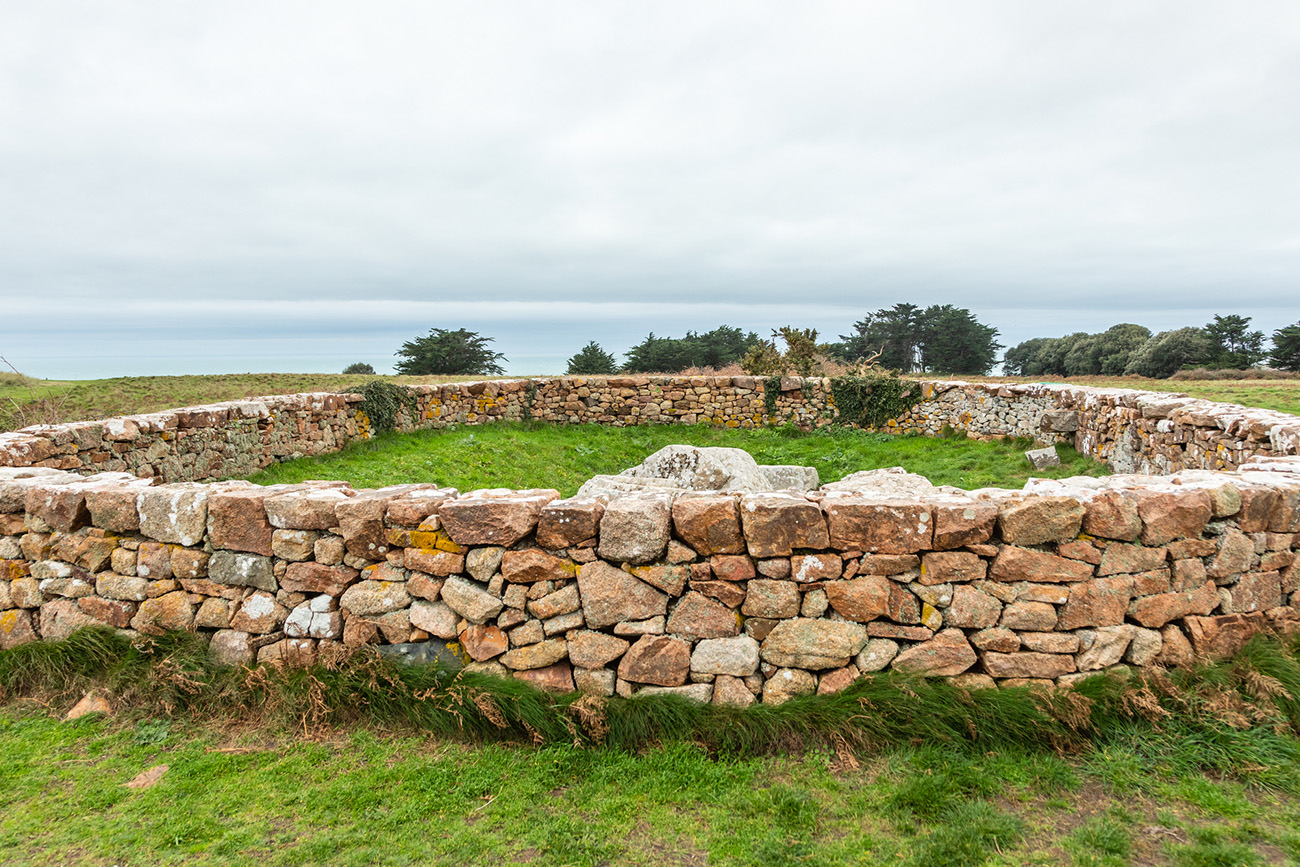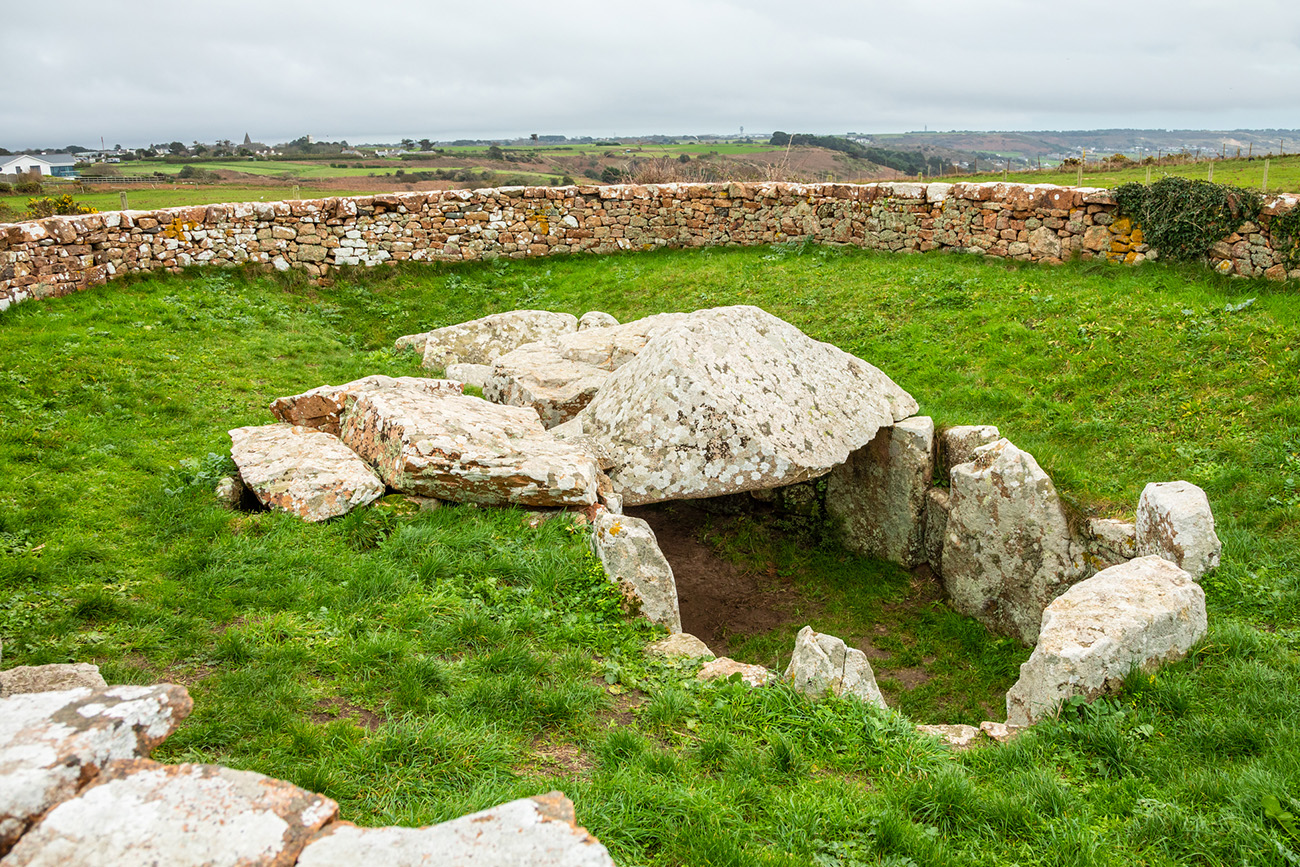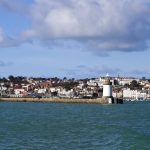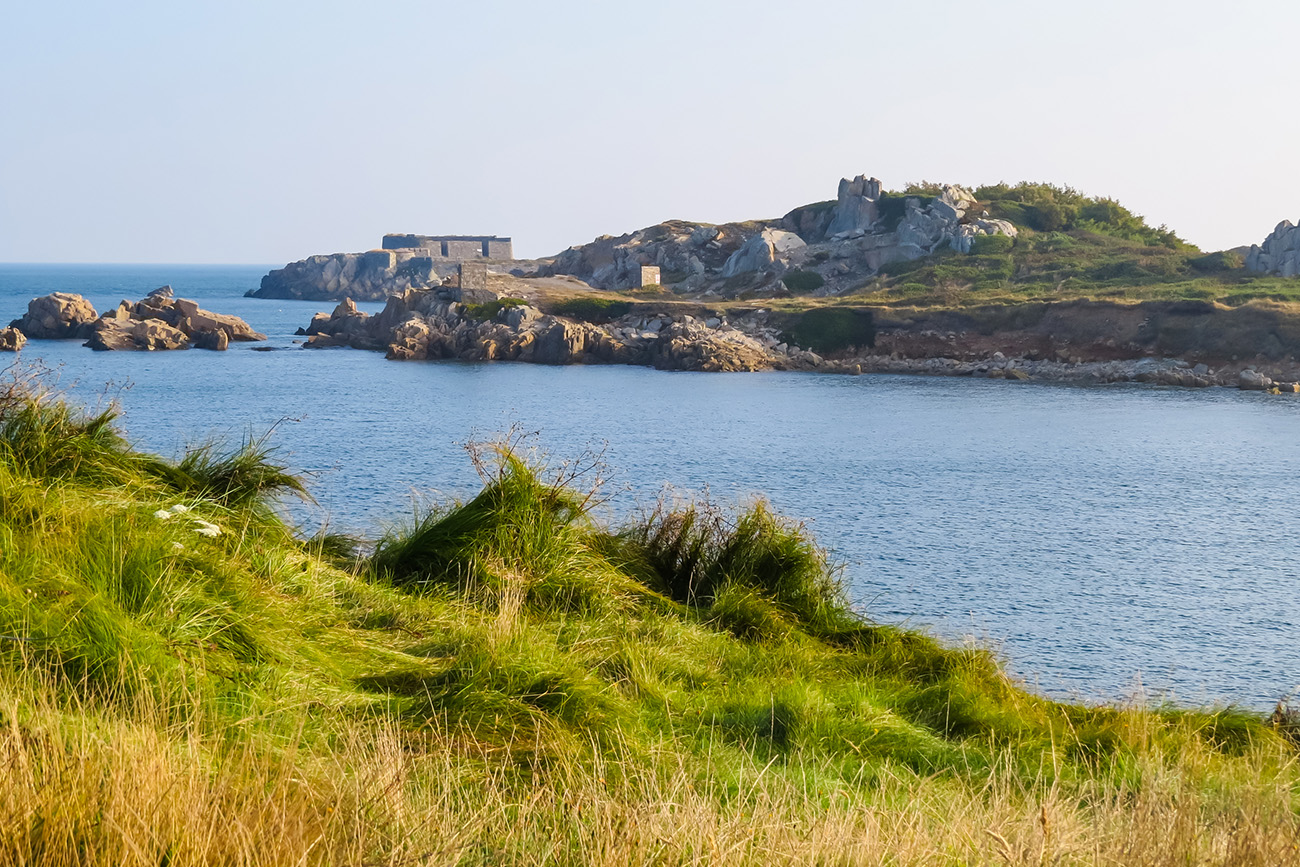
Evidently fairly developed Neolithic societies emerged here in the millennia that followed, and we find numerous burial dolmens and other structures still extant on the islands from that time. However, the Channel Islands really begin to enter the historical record during the second half of the first millennium BCE, from which time many hoards of Celtic coins and jewellery on the islands date.
Moreover, we also find the islands being described by writers from the more literate societies of the Mediterranean.
They referred to them as the Islands of Armorica, a reference to the fact that the region straddling Normandy and Brittany was in Roman times known as Armorica.
Celtic Habitation on the Channel Islands
The Channel Islands at the time formed part of the wider Celtic world. The Celts were an Indo-European people who had migrated into Western Europe in the Dark Ages which followed the Late Bronze Age collapse around 1200 BCE. They came to dominate the regions approximating with much of Spain, all of France, or Gaul as it was known at the time, and also most of Britain and Ireland. Their culture was relatively sophisticated by the sixth and fifth centuries BCE, with fortified urban centres known as oppida dotting the countryside of Gaul and other regions.
Across Gaul the Celts were divided into different groups such as the Veneti, Belgi, Aedui, Arverni and Parisi. The region of Armorica in north-western Gaul was dominated by the Veneti, along with smaller groups such as the Coriosolites, and so it was these Celtic groups who inhabited the Channel Islands in the second half of the first millennium BCE (500 BCE – 0).
Our ability to reconstruct the Celtic presence here is limited owing to a lack of documentary material, as while the Celts of Gaul were literate, they largely used writing for functional purposes such as on funerary monuments or coins, but not for producing accounts of how they lived. Yet, the discovery of extensive coin hoards and Celtic jewellery in Jersey and the other islands indicates a substantial level of habitation here in pre-Roman times.
The Roman Conquest
The Romans had conquered parts of southern Gaul as far back as the late third century BCE as they sought to acquire a land bridge between Italy and their colonies on the Mediterranean coast of Spain, but they did not venture north of the Alps and the Central Massif into Gaul proper until Julius Caesar determined to conquer the region in 59 BCE.
His campaigns here over the next decade are legendary, with Caesar reducing Gaul and the Low Countries to Roman rule in the space of a few years, while also crossing the Rhine into central Germany and heading across the English Channel to explore southern Britain briefly, though it would be another century before the Romans attempted a conquest of that island.
The swift nature of the Roman conquest of Gaul in the 50s BCE is exemplified in a massive hoard of some 70,000 coins which were found on Jersey in 2012. The academic understanding is that this coin hoard was left behind by the Celts on the island that were fleeing from a Roman cohort of legionaries as Caesar’s forces rapidly conquered Armorica and the rest of northern France.
The conquest was over by the end of the decade and Caesar turned south to cross the Rubicon into Italy with his legions and claim absolute power over the Roman Republic. But how would regions like the Channel Islands fare under Roman rule?
Life on the Channel Islands in Roman Times
The initial conquest of Gaul by Caesar only resulted in a gradual transformation of the region.
Roman colonies were established over time in places like Lugdunum (Lyon), Cavillonum (Chalon-sur-Saone), Bononia (Boulogne) and Burdigala (Bordeaux) and the south, south-west and east of France became particularly Romanized, as these areas were especially profitable for viticulture and winemaking.
The north of the country, though, experienced less Romanisation and there is a debate as to whether Roman settlements of any major kind were ever established on the Channel Islands, or whether they remained a haven for the only partially Romanized Celtic population. The evidence for Roman activity here is limited.
For instance, colloquial reference in more recent times to Mont Orgeuil on Jersey as ‘Caesar’s Fort’, would seem to be inaccurate and the fortifications here are most certainly medieval in origin, but the allusion to Caesar may indicate a folk tradition of a Roman military base on Jersey two millennia ago.
More substantively, the remains of a Gallo-Roman temple have been identified on Le Pinacle, a striking protruding pinnacle of rock at the edge of the Les Landes coastal region in the north-west of Jersey. Thus, while the Islands of Armorica may have been on the periphery of the Roman Empire, there was some limited direct involvement by the Romans here.
The Darkening Age
Of course, like all empires, Rome itself fell prey to more aggressive nations in due course. From the third century CE onwards several Germanic and Asiatic tribes such as the Franks and Alemanni were breaking through the border defences along the river Rhine and raiding into Gaul and other provinces.
In the fourth and fifth centuries the raids expanded and became more intense all along the northern borders in Germania, Noricum (modern-day Austria and Slovenia) and along the River Danube in the Balkans, until eventually the Western Roman Empire collapsed in 476 CE and was replaced by a number of Germanic kingdoms such as those of the Visigoths in Spain, the Ostrogoths in Italy and the Franks and Burgundians in Gaul.
England was overrun by two Germanic groups known as the Angles and the Saxons in the fifth and sixth centuries. As this occurred, many groups of Celtic Britons fled from southern England towards Brittany. Some of these settled on the Channel Islands, thus imbuing the islands with a Brittonic heritage.
The fate of the inhabitants here in the centuries that followed, as a new Dark Age descended across post-Roman Europe, is broadly unknown, but the influence of the Romans would be felt for centuries to come, not least in the development of Jèrriais, the Jersey Language or Jersey French, and Guernésiais or Guernsey French, dialects of French spoken on the islands in medieval times, both of which are ultimately derived from Latin, the language of the Romans.
Would you like to learn more about the history of the Channel Islands? Then don’t miss out on the following article: The Channel Islands and World War II






